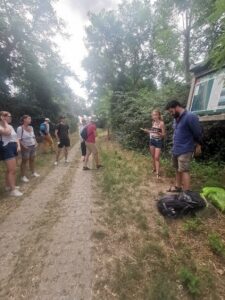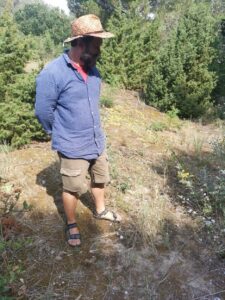Lab 1: STEAM+ Innovation Lab in Venice: ‘Citizen Science for Marine Conservation’ – 18-23 of July 2021
By Henriette Johansen, honors student, University of Oslo, Norway and participant in the Innovation Lab
The trip to Ca’ Roman Island
On the third day of the Venice workshop, we went on an exploration to Ca’ Roman island to experience the social-ecological environment of the Lagoon firsthand. As we got off the boat and made it past the pier, we met our guide for the day, Luca. An expert who knew this island like the back of his hand. He enthusiastically shared his knowledge of the island with us as we went along providing us with all sorts of fact, everything from where the different species of pine trees originated from, to histories about nuns and Nazis.
The massive work put into translating every single species, every single story, every single joke Luca told, should not go unrecognised. A huge appreciation should be directed to Margherita, the learning assistant on the workshop, as they put a lot of time and effort into giving us the best experience.

Margherita translating what Luca just said. Photo: Henriette Johansen
The guided tour focused on three sites with different characteristics. I found the first site the most interesting. The ‘pineta’, where all the pine trees were located, was our first stop on the guided tour. Luca talked about the origins of the pines, and in what context we might know them from. He brought up the pine nuts, describing them as ‘la gloria de pesto Genovese’ (the glory of Genoese pesto).
The pines were not the only species coming from overseas. The moss on the site was from the Baltics, and the peculiar thing about it was that the climatic conditions on the island allowed the moss to live side by side with the herbs from the Mediterranean.

The moss from the Baltics, the herbs from the Mediterranean, and Luca. Photo: Henriette Johansen
It is quite fascinating to think about the fact that species being brought over from different climates are able to adapt and live in harmony with the rest of the plants already there; they are so different, yet still able to live together in the same ecosystem. One can certainly learn a lot just by observing the nature.
